Eyes to the ground, I’m drawn to something glinting in the sand.
A beautiful piece of blue glass with a swirly pattern through it. Nice.
Further along, on the red sandstone rocks, I find a piece of a vintage cream pot.
It’s cracked, but you can still make out that it’s from Galloway Creamery in Stranraer, on the shores of Loch Ryan.
The proverb – “One man’s trash is another man’s treasure” – springs to mind.
I’m on the banks of the West Water, a tributary of the North Esk, slightly downriver from Pirner’s Brig.
Alas, the brig, aka bridge, no longer exists. It washed away during the severe floods of Storm Babet in October 2023.
A set of stone steps leading down to the beach was also seriously damaged, so getting there is slightly tricky these days, requiring a steep scramble down an often muddy path.
Pirner’s is a fab spot for a picnic
Still, it’s a lovely wee area to explore. It’s a fantastic place for a picnic, either above the river among the trees and at dedicated tables, or down on the beach.
It’s also a glorious swimming spot, with a deep pool below where the bridge once stood.
And it’s also a fantastic place for wombles like myself – with the recent storms and floods unearthing ‘treasures’ galore.
As well as my cream pot and blue glass I also discover: pieces of ornate plate; old-fashioned beer bottles; glass dishes; a ceramic jug; a china candle holder; and an intact vintage egg cup.
Now I’m well aware some folk might argue that cracked pottery and broken grass from a distant era may not have any value. But I’d say – beauty is in the eye of the beholder!
Where do the ‘treasures’ come from?
It’s a romantic idea to imagine some of these ‘treasures’ might hail from the Victorian era.
This might, or might not be the case: I’ve no idea how long Pirner’s has been used as a “dump”.
But I like the idea that Victorian women, sporting billowing skirts, tight corsets, and feathered bonnets, might once have used some of these items – and had servants spirit them out of sight when they were broken or no longer required.
If indeed these items hailed from folk living in the 1990s, then so be it.
One thing is well known locally, though – that Pirner’s has been used as a dumping ground for quite some time.
A local informs me that dumping increased after the recycling centre in Edzell closed “about 12 years ago”.
There’s certainly a feeling of neglect about the place now, which is a sad thing.
And with the bridge owned by two estates, who would have to jointly pay for it to be replaced, there’s probably little hope of it being reinstated any time soon.
Should we remove Edzell ‘treasures’?
Back to the ‘treasures’, though, and while I would never advocate removing things from private properties, this is of course a public space.
Just a few weeks ago, I heard of someone who found an intact vintage Vaseline Chesebrough New York bottle here at Pirner’s.
That’s pretty cool because Robert Chesebrough was an American chemist who discovered petroleum jelly in 1859 – which he marketed as Vaseline – and then founded the Chesebrough Manufacturing Company in 1875.
What’s the story behind Pirner’s brig?
As for the bridge, it was built in the early 1900s via a donation from the Paisley-based millionaire family J&P Coates, who had a hunting lodge nearby.
The family had made its fortune from manufacturing sewing reels, bobbins and threads.
The Scots word for a bobbin is ‘pirn’ hence the name Pirner’s Bridge.
While the original bridge was constructed to allow game hunters to cross the river, the newer bridge – washed away during Storm Babet – was a sturdier metal affair.
A grassy path runs from the picnic spot along the top of a deep gorge.
With huge drops and much of the path having crumbled away during Babet, it’s not a risk worth taking.
Stunning walk along riverside
Instead, I pop over a fence into a stubble field running alongside the river.
I pause, frequently, to peer down into the swirling waters that crash and tumble through the narrow ravine.
As I stroll, drinking in every drop of autumn sunshine, and gazing at glorious views of the distant Angus hills, I feel a real sense of contentment wash over me.
That’s until I stumble over the corpse of a huge black cat. The poor thing.
It’s long dead but I wonder what happened. Could it have been a wild one, or, dare I suggest, a ‘big cat’?
I’m too saddened to take a photo, so I can only hope it’s not someone’s lost (very big) and now deceased cat.
I walk a loop of the stubble field before heading back along the tarmac road towards Edzell.
What historic buildings did I pass?
After passing the currently closed 12th Century Edzell Castle, I reach the old church and graveyard.
All that remains of the 14th-century Church is a small burial aisle, built in the 16th Century by the local Lindsay family as a chantry (a chapel or altar in a church where a priest would sing masses or say prayers for the souls of the dead).
It was later used as a burial vault for the family, but the church itself fell out of use when a new parish church was erected in 1818.
I’m hungry after my morning of exploring, so pop into bustling Sinclair’s Larder in Edzell for some soup and coffee before heading off to my next adventure – in Glen Prosen.
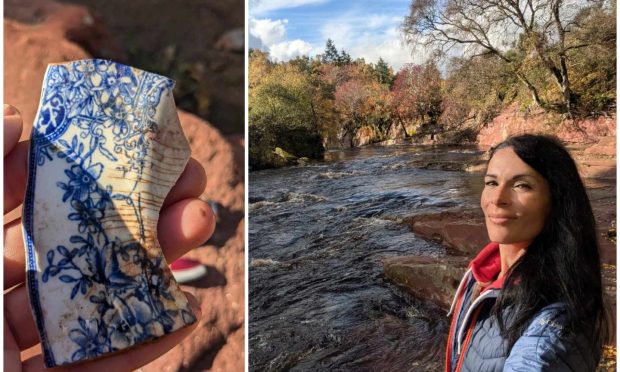
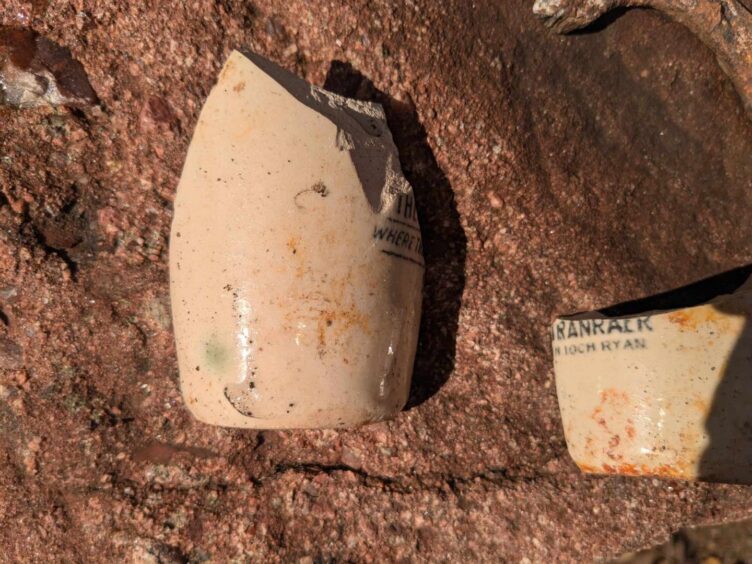
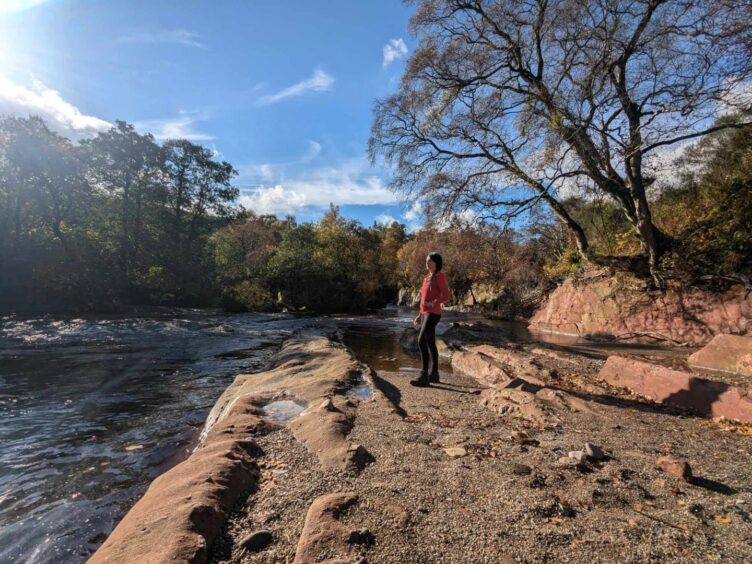
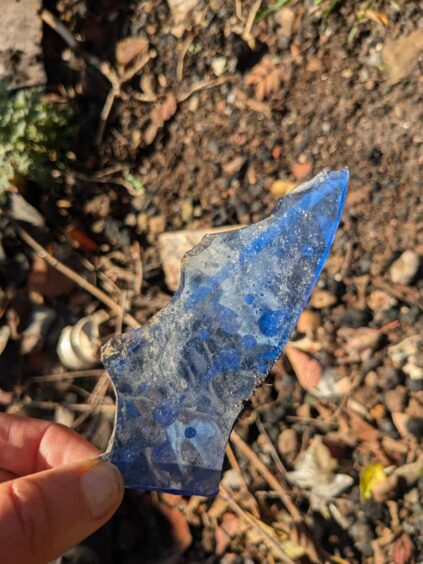
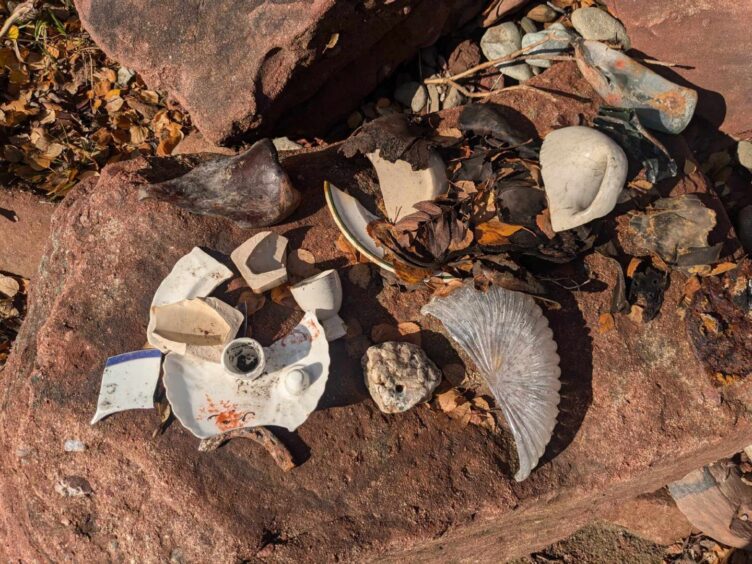
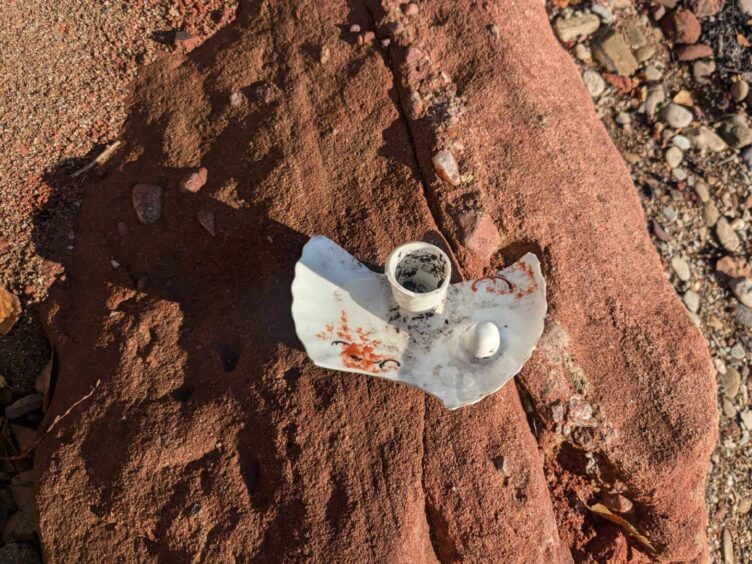
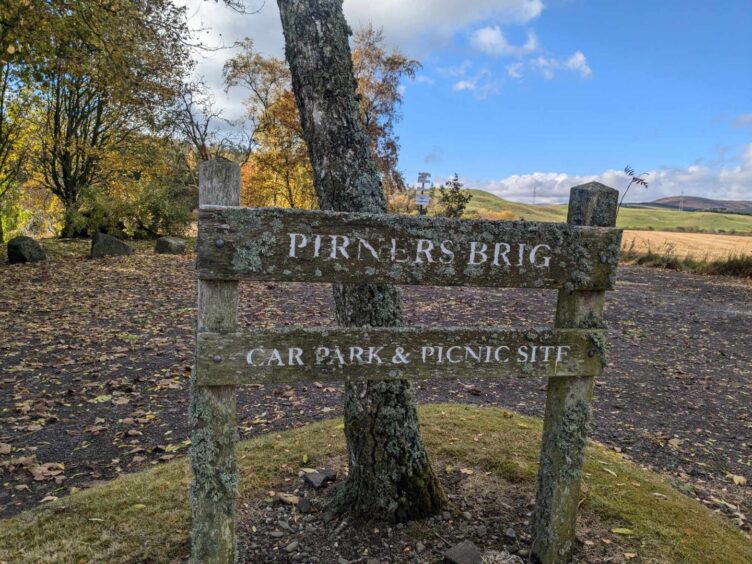
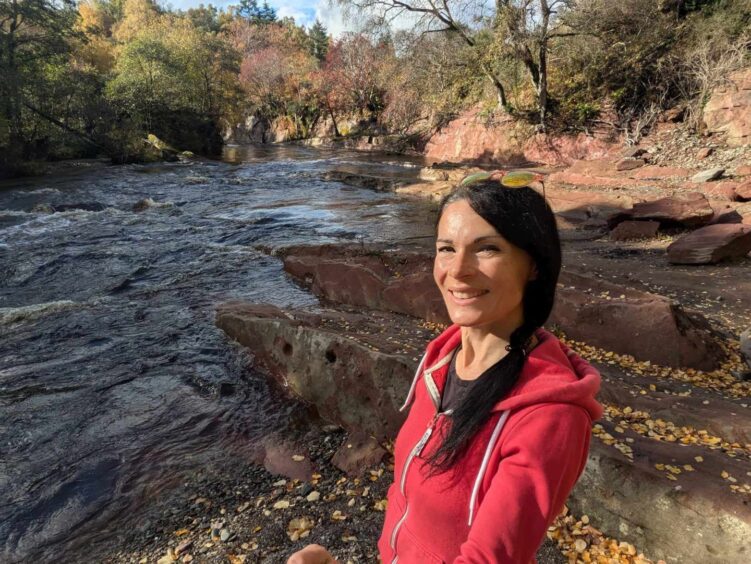
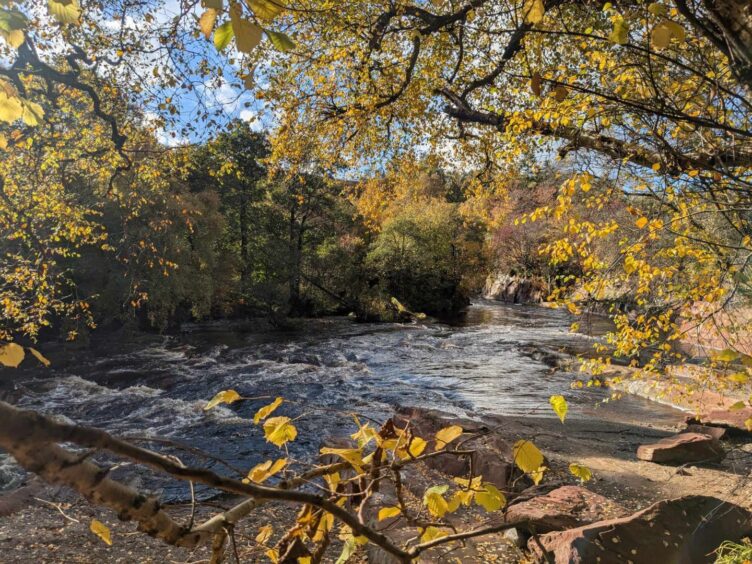
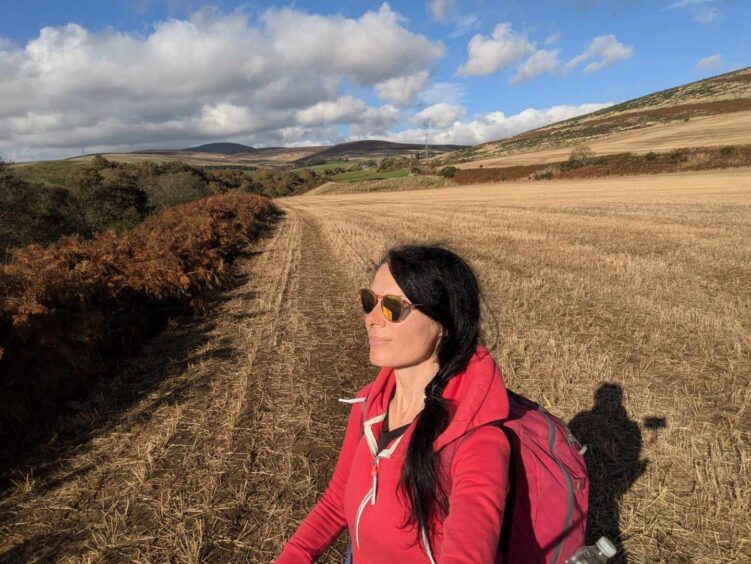
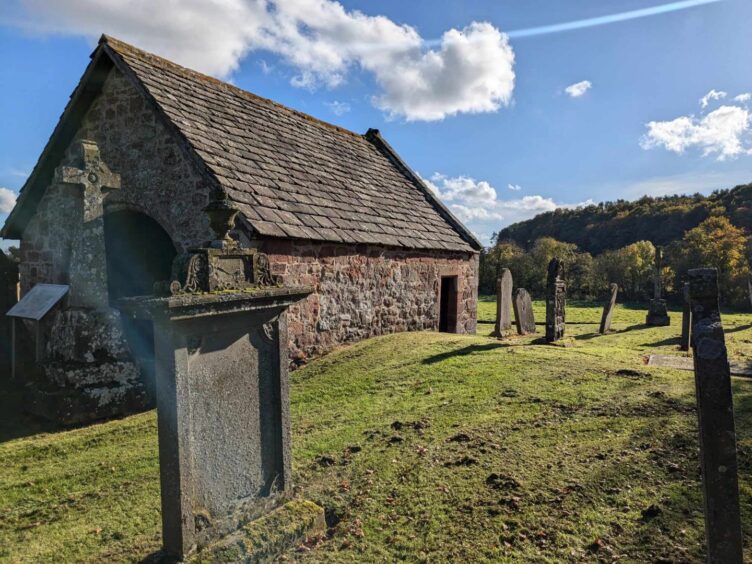










Conversation